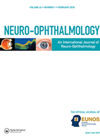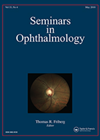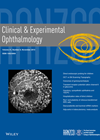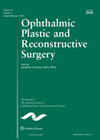You searched for "fusion"
Management of traumatic corneal perforations with anterior lamellar techniques: The mini-DSAEK
4 December 2024
| Ben Smith
|
EYE - Cornea
The authors present the first case report in which a mini (reduced diameter) Descemet’s stripping automated endothelial keratoplasty (mini-DSAEK) has been used to manage a traumatic corneal perforation. A 69-year-old male presented with 6/36 best spectacle-corrected visual acuity (BSCVA) and...
Supranuclear ocular motility disorders
Figure 1: Bilateral INO Introduction Complex ocular motility disorders are a diagnostic challenge. These patients come with very complex ocular motility presentations and require a careful and detailed assessment in order to find the correct diagnosis and arrange appropriate investigations....College of Optometrists and British Optical Museum open to visitors on Sunday 10 September
The College of Optometrists is once again opening its doors to visitors, as part of Open House London.An unusual case of sellar chondroma
1 June 2014
| Claire Howard
|
EYE - Neuro-ophthalmology
A single case of chondrogenic neoplasm arising from the base of the skull is presented and discussed. These benign and slow growing tumours in the sellar region are extremely rare and as such this article provides a useful insight and...
The approach to angle-closure glaucoma
1 October 2016
| Kaivon Pakzad-Vaezi
|
EYE - Glaucoma
Further to my last article in Eye News (print issue) describing the diagnostic approaches to various clinical scenarios in glaucoma, the approach to angle-closure glaucoma (ACG), a situation terrifying for patient and registrar alike, will be discussed. Please refer to...
Non-contact-lens-associated acanthamoeba keratitis
1 October 2015
| Jaya Myneni
|
EYE - Cornea, EYE - General
|
Acanthamoeba keratitis, microbial keratitis, microscopy, non-contact-lens, time of presentation
This retrospective study was done to study the clinical presentation and microbiological results of non-contact-lens-related acanthamoeba keratitis (AK). One hundred and ninety-four patients with microbiological / histopathological diagnosis of AK over four years were included. All patients had corneal scrapings...
Mitomycin C versus 5-FU as an adjunctive treatment for trabeculectomy
1 February 2014
| Anjali Gupta
|
EYE - Glaucoma
Antifibrotic agents are used during trabeculectomy (TRAB) to improve long-term surgical success by reducing fibrosis of subconjunctival and episcleral tissue. The purpose of this meta-analysis was to directly compare the efficacy and safety of the two most frequently used antifibrotic...
Leading sight organisations to merge
14 August 2020
Two international sight organisations have announced that they will merge from January 2021 to better tackle the global vision crisis.
A review of orbital plasmacytomas
This is a multicentre review of 30 patients with orbital plasmacytomas. There were equal numbers of males and females, and the average age at diagnosis was 57 years. All patients were either already diagnosed with systemic multiple myeloma or it...OCT choroidal signs for congenital retinal pigment epithelium hypertrophy
4 February 2021
| Annes Ahmeidat
|
EYE - Vitreo-Retinal
Congenital hypertrophy of the retinal pigment epithelium (CHRPE) on ocular coherence tomography (OCT) has the characteristic sign of RPE thickening and hyper reflectivity. However, the underlying choroid characteristics remain under researched. This retrospective study utilised data from an ophthalmic oncology...
Toxic nutritional optic neuropathy (TON)
2 August 2022
| Ali Yagan
|
EYE - General
Toxic optic neuropathy are a group of conditions manifested by reduction of visual functions secondary to damage to the anterior visual pathways from exposure to a toxin. The implicated toxin could be work-based, food or drink related, or iatrogenic medication....
Strange Sequelae Succeeding ‘Surfer’s Eye’
1 February 2014
| Jonathan Park
Ophthalmologists in the UK are relatively infrequently faced with a patient requesting surgery for a pterygium. This condition is more common where ultraviolet exposure is greater, especially if coupled with activities associated with ocular surface irritation. For this reason, a...









